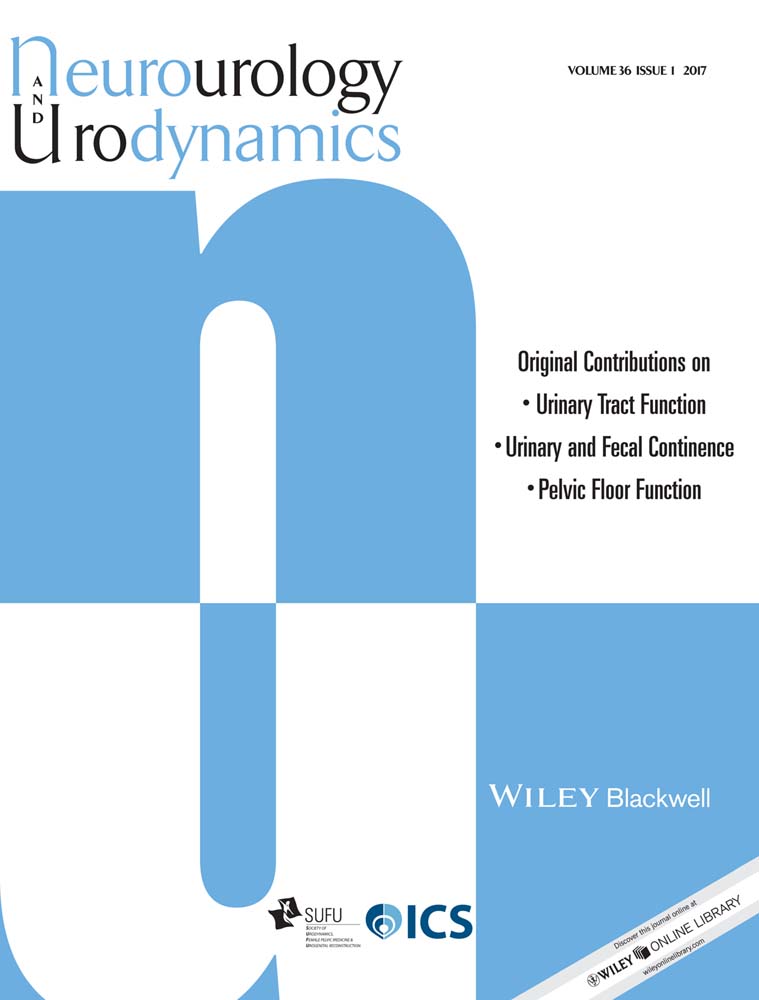Brain activity on fMRI associated with urinary bladder filling in patients with a complete spinal cord injury
Abstract
Objective
Patients with complete spinal cord injury (SCI) may maintain some perception of bladder fullness. The aim of the study was to evaluate brain activation arising from anticipated extraspinal sensory pathways.
Methods
Fourteen patients ages 24–54 years were enrolled, all having experienced a complete SCI (ASIA A) at C7 to T5 an average of 17 months before study entry. Urodynamic equipment was used for repeated bladder filling and detrusor activity evaluation. All functional magnetic resonance imaging measurements were performed using a Siemens Trio 3T scanner with the GRE-EPI sequence (field of view = 192 × 192 mm, voxel 3 × 3 × 3 mm, TR/TE = 3000/30 ms, 45 slices). Nine hundred dynamic scans were acquired over 45 min. Statistical analysis was done in SPM8 using a general linear model. Statistics using t-tests were thresholded at P = 0.001.
Results
We excluded results from two patients because of activation artifacts. In 8 of 12 patients, significant brain activity was observed during urinary bladder filling. We found significant activation clusters at the nucleus of the solitary tract (NTS) (3/8), parabrachial nucleus (PBN) (4/8), hypothalamus (4/8), thalamus (6/8), amygdala (7/8), insular lobe (5/8), anterior cingulate gyrus (5/8), and prefrontal cortex (8/8). Activations in nuclei involved in afferents likely from the vagal nerve (NTS and PBN) correlated significantly with reported bladder sensations.
Conclusions
These data suggest that extraspinal sensory pathways may develop following SCI and that vagal nerve may play a role in re-innervation of the urinary bladder. Neurourol. Urodynam. 36:155–159, 2017. © 2015 Wiley Periodicals, Inc.




